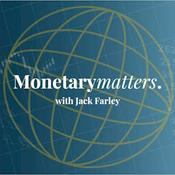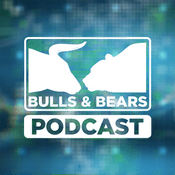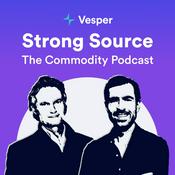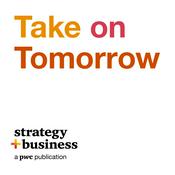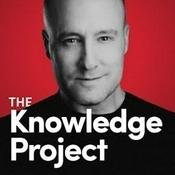The Angus & Pete Show CX Podcast
The Angus & Pete Show

Nieuwste aflevering
Beschikbare afleveringen
5 van 41
- S2 Ep 5 | CX Insider: Rich on Product ManagementThis episode features CX Insider Rich, a Commercial and Strategy Product Manager, who details his demanding role. He argues that solid process trumps technology and criticizes the industry’s focus on building complex "Swiss Army knives" without ensuring they are consumable and adopted. Rich also highlights the extreme difficulty of building viable business cases amidst the risky, unclear pass-through charging models for AI. Key takeaways: • Process Trumps Technology: Product success relies on having the People, Systems, and Process (PSP) in place, with the process being much more important than the technology itself. Companies must ensure they can sell, support, and bill for a product before taking it to market. • The Adoption Focus: The industry emphasis must shift away from simply deploying products to ensuring they are adopted and used. Vendors often miss this critical step by focusing solely on the initial sale, building capability without sufficient thought to real-life use. • The AI Pricing Risk: Current AI models often use pass-through charging, which Rich views as lazy product management. This practice creates an undefined and unacceptable financial risk for businesses, making it nearly impossible to build predictable and justifiable business cases. • Knowledge Velocity Problem: The exponential speed of technological change (products changing twice a week) creates a knowledge velocity problem and a deficit of genuine experts. Vendors must educate buyers by articulating clear, real-life use cases or scenarios, not just features. • Keep It Simple: Vendors must stop over-complicating things and focus on clarity and simplicity. Rich notes that if a vendor cannot clearly explain a complex product to him—an experienced product manager—they cannot expect him to successfully explain it to internal stakeholders or customers.--------38:37
- S2 Ep 4 | News Beat: December 2025This episode of The Angus and Pete Show reviewed the recent CC Expo and tackled two major press articles concerning the state of AI adoption in the industry. The core discussion centred on the acknowledgment of the "hype" surrounding AI, the necessity of delivering real business value, and the critical importance of moving contact centres from perceived cost burdens to recognized revenue generators. The hosts emphasized that while AI offers immense potential for efficiency and new data insights, poor execution and a failure to address foundational business process issues will guarantee failure. Here are the key show notes from the discussion: • Focusing Beyond the Hype: While the CC Expo strongly featured AI, omnichannel engagement, and agent productivity, vendors acknowledged the significant "hype" around the technology. Demos were often focused on narrow use cases and aimed at achieving efficiency and cost-saving, with "very little about the customer experience". • The Shift to Outcome Metrics: Organizations are increasingly redefining contact centres as potential revenue engines. Traditional efficiency metrics (like AHT) are being replaced by outcome-based metrics, such as customer retention, selling success, and customer lifetime value, reflecting a massive change in business focus. • Unlocking the Data Goldmine: AI provides 100% real-time analysis of all consumer interactions, turning conversations and activities into "actionable insights". This high level of accuracy enables instant fraud detection and the ability to spot opportunities for product innovation. • ROI Requires Proper Implementation: Companies with successful AI implementations report high returns (up to 3.5 times investment), supported by tangible metrics like a 14% increase in issue resolution per hour. However, only 25% of contact centres have successfully integrated AI automation, often due to poor execution. • The Need for Strategic Rethink: Success comes only when businesses commit to transformational thinking, not by simply applying AI to "old broken processes". Those who hesitate or fail to move past small-scale pilot projects risk losing competitive ground very quickly.--------29:57
- S2 Ep 3 | It's Not About the Tech, Stupid!In this episode of the Angus and Pete Show, we talk about customer engagement and the painful disconnect many people feel when dealing with companies. Drawing on reports from Contact Babel, we discuss why technology alone can't fix customer experience. The real secret is empathy and focusing on core customer needs: speed, convenience, and the human touch. We also look at the massive financial stakes—great service earns a premium, but one bad interaction can make a customer walk away fast. ### Key Takeaways * *Prioritize the fundamentals.* Speed, convenience, and friendly service are non-negotiable must-dos for a great experience. Focus investment on technologies that support these benefits, not just on cutting costs. * *The human touch matters most.* Customers overwhelmingly want interaction with a real person, especially when things go wrong. AI should be used to augment agents—giving them tools and insights to enhance empathy and compassion—not to automate the relationship away. * *The stakes are high.* Great service allows businesses to charge a price premium, potentially up to 16%. But failure is costly: 32% of customers globally will abandon a beloved brand after just one bad experience.--------30:47
- S2 Ep 2 | CX Insider: Uncle Ken on the Experience of ExperienceAngus, Pete, and the highly experienced Uncle Ken, provide a sharp critique of the current state of the CX and Contact Centre industry. The key takeaway is that the constant "noise and burbling about artificial intelligence" is causing fragmentation and distracting the industry from crucial basics. The hosts and Ken conclude that high turnover among contact centre managers, combined with sellers who have lost foundational knowledge, necessitates an urgent re-education process across the industry. Here are the concise takeaways: • Boomers Are Not Anti-Digital: Older customers (boomers) are highly digital. If they use the telephone, it's because they are "unforgiving" and frustrated by digital channels that fail or offer bad service, proving that high expectations drive channel choice, not age. • AI Hype Focuses on Costs: AI implementations are often "siloed" and appear primarily driven by achieving "cost cutting and efficiency" for the business, rather than delivering actual benefits or a better experience for the customer. • Don't Automate the Mess: The hype around AI has "hijacked the finishing off of the digital first story". Implementing AI before sorting out basic digital channels and data only results in technology being "very analytical and very automatic with the mess that you've already got," which makes things worse. • Outbound Tech Remains Valuable: While outbound calling (just dialing a list of people) is "dying on its feet," the underlying technology remains highly useful for improving customer experience (CX) and efficiency. Examples include using call-back systems (like Qbuster) or sending pre-call texts to alert customers to an incoming call. • Seller Knowledge Deficit: The industry suffers from a lack of fundamental knowledge, exacerbated by contact centre manager tenure decreasing to about 2.5 years. Sellers who claim to be experts are often "not worthy of the badge" and must step up to educate buyers and "sense-check" RFPs. • Measure the Fundamentals: Sellers must be able to understand and apply basic contact centre mathematics, such as Erlang for voice and Little's law for digital channels, to accurately build Return on Investment (ROI) models. New technology will "fail" the consumer if it is not developed with the fundamental ability to "measure and manage what's going on".--------45:43
- S2 Ep 1 | Here We Go Again! A is for . . .Welcome back to The Angus and Pete Show for Series 2. Angus and Pete tackle "A is for Adoption" in this episode. Everyone's building or buying contact center tech, but driving user adoption is the hard part. They discuss why many deployments fail: it’s not just tech, it’s organizational change, managerial vision, and employee willingness. We need to focus on Time to Value (TtV), which means delivering tangible business benefits quickly. The job starts, not finishes, at deployment. And remember, you must tell the users what’s in it for them. They also explore key paradoxes like the required hybrid approach to automation versus human touch. Key Takeaways Adoption is now a *strategic business imperative*, not just a function you tack on at the end of a project. When deploying new technology, you have to prioritize *Time to Value* (TtV)—get users to an "aha moment" early on—and measure business outcomes, not just basic activities like agent logins. Training shouldn't be a box-checking exercise; it should be *continuous education* focused on explaining the overall desired outcome and what benefit the new system offers to the people using it.--------29:15
Meer Zaken en persoonlijke financiën podcasts
Trending Zaken en persoonlijke financiën -podcasts
Over The Angus & Pete Show CX Podcast
The Ultimate Podcast for Call Center, Contact Center & Customer Experience Professionals.
Looking to stay ahead in the world of call centers, contact centers, and customer experience (CX)? Join industry veterans Angus Peacey and Pete Brown as they dive deep into the technology supply and buy chain that powers customer engagement and service.
From CX software vendors to resellers, analysts, consultants, and end users, we uncover the real challenges, motivators, and trends shaping the industry. Whether you’re a seller looking to sell smarter or a buyer aiming to make informed decisions, this podcast gives you insider insights to navigate the evolving tech sales and buyer landscape.
Tune in and transform the way you approach selling or buying CX technology!
Podcast websiteLuister naar The Angus & Pete Show CX Podcast, Unfinished Business en vele andere podcasts van over de hele wereld met de radio.net-app

Ontvang de gratis radio.net app
- Zenders en podcasts om te bookmarken
- Streamen via Wi-Fi of Bluetooth
- Ondersteunt Carplay & Android Auto
- Veel andere app-functies
Ontvang de gratis radio.net app
- Zenders en podcasts om te bookmarken
- Streamen via Wi-Fi of Bluetooth
- Ondersteunt Carplay & Android Auto
- Veel andere app-functies


The Angus & Pete Show CX Podcast
Scan de code,
download de app,
luisteren.
download de app,
luisteren.











